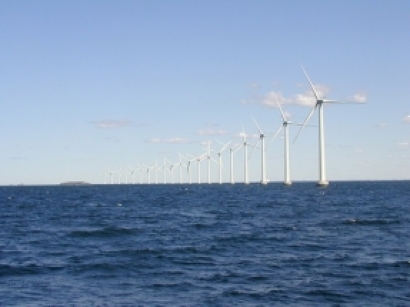
This decision follows the August 9th determination by the U.S. Department of the Interior to delay publication of the Vineyard Wind 1 project’s Final Environmental Impact Statement (FEIS) and to instead undertake a supplemental draft Environmental Impact Statement process.
According to the department's Bureau of Ocean Energy Management, it is “expanding its cumulative analysis of projects within its draft Environmental Impact Statement (EIS). Because BOEM has determined that a greater build out of offshore wind capacity is more reasonably foreseeable than was analyzed in the initial draft EIS, BOEM has decided to supplement the Draft EIS and solicit comments on its revised cumulative impacts analysis.
“BOEM anticipates completing the Supplemental EIS late this year or early next year,” the department said.
Publication of the FEIS was one of the final steps for Vineyard Wind 1 in the federal permitting process that began in 2017 and had since been targeted for completion by August 16th. The review process has encompassed evaluation by more than 25 federal, state, and local regulatory agencies and commissions.
Senator Elizabeth Warren, D-Mass., commenting on the delay, said, “The Trump Administration's last-minute decision to delay approval of a major offshore wind energy project is extremely disappointing. I urge the Administration to work towards a solution that will protect the environment, address the concerns raised by our local fishermen, and allow the Vineyard Wind project to move forward without delay."
Interior Secretary David Bernhardt explained the decision in an interview with Bloomberg News Friday, saying, “It’s crucial the impacts be thoroughly studied. For offshore wind to thrive on the outer continental shelf, the federal government has to dot their I’s and cross their T’s.
“If it’s going to be developed, it needs to be developed in a way that everyone gets to say, at least, that we didn’t shave the ball,” Bernhardt said.
Vineyard Wind states it has not yet received any documentation as to the requirements for the expanded analysis that BOEM has indicated but says, “It is clear that the timing of such an analysis is not compatible with the original timeline that has been communicated to Vineyard Wind since March 2018, which Vineyard Wind used to build its delivery schedule. With this development, the shareholders must revise the project as the original timeline is no longer feasible.”
According to the company, permitting of the Vineyard Wind Connector, the cable connection from the project site to the regional grid, will continue as planned in advance of the revised project. Vineyard Wind will also use the delay to further improve the project and enhance its many benefits, to the extent feasible.
Since filing its construction and operations plan with BOEM, Vineyard Wind’s efforts have been subject to Executive Order 13807, issued by the Trump Administration in August 2017, which created the One Federal Decision (OFD) policy.
As the first privately proposed major energy infrastructure project subject to OFD, state and federal regulators worked closely with Vineyard Wind to ensure that efficient permitting of the project would feature a clear, transparent and coordinated timeline established by DOI to finalize environmental reviews and authorization decisions.
The project has already received multiple permits and approvals. In April, the Massachusetts Department of Public Utilities approved long-term power purchase contracts between Vineyard Wind and Massachusetts’ electric distribution companies (EDCs) for the delivery of clean, affordable offshore wind energy by January 2022.
Vineyard Wind LLC is an offshore wind development company seeking to build the first large-scale offshore wind energy project in the US, to be located 15 miles south of Martha’s Vineyard. Vineyard Wind, based in New Bedford, Massachusetts, is 50 percent owned by funds of Copenhagen Infrastructure Partners (CIP) and 50 percent by Avangrid Renewables.

